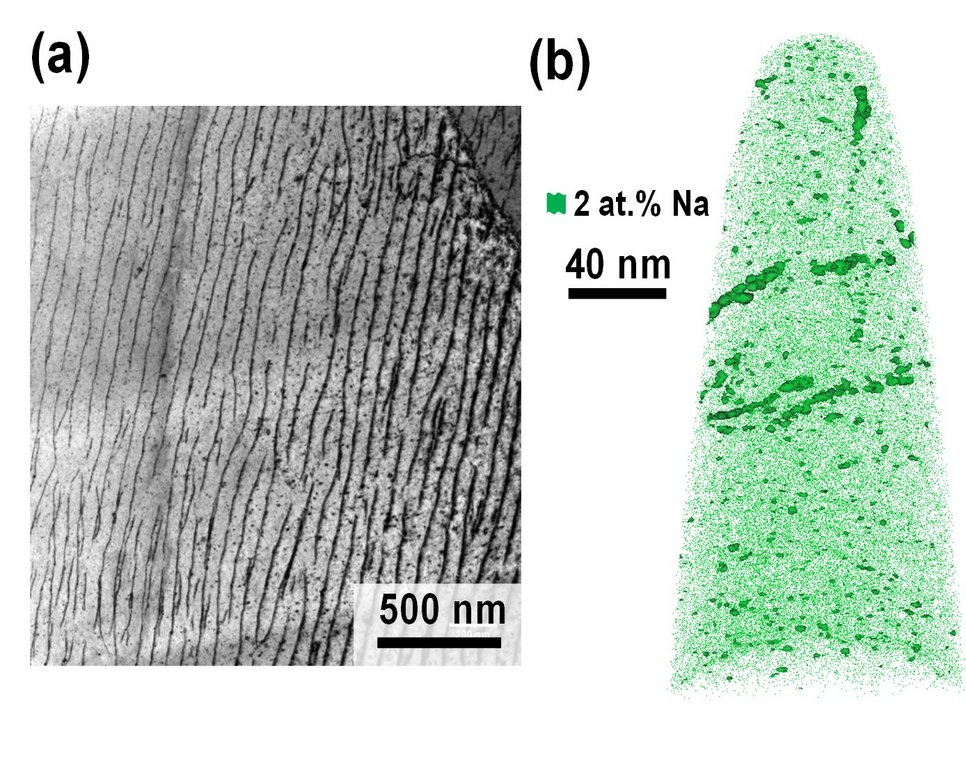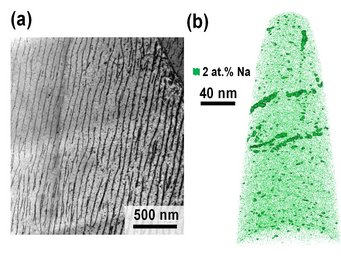The arrangement matters: how to design advanced thermoelectrics
Max Planck scientists publish their recent results in the journal Advanced Functional Materials
Thermoelectrics have been providing power for many space missions and found widespread applications in cooling systems from the electronics to medical fields. Pending a further improvement in efficiency, they can become competitive technology to produce electricity from waste heat. To achieve higher conversion efficiency, thermoelectric materials need to have as low thermal conductivity as possible to maintain a heat gradient to harvest power from. Since the last decade, researchers started to realize the importance of dislocations to further lower the thermal conductivity. However, there is a limit on the density of dislocations that can be introduced to a material. A team around Dr. Lamya Abdellaoui, postdoctoral researcher in the independent research group Nanoanalytics and Interfaces at the Max-Planck-Institut für Eisenforschung (MPIE), was now able to significantly reduce the thermal conductivity of lead-tellurium thermoelectrics without increasing the dislocation density. For the first time, it is demonstrated that the arrangement of the dislocations and their composition are as important as their amount. Together with their collaboration partners at the Tongji University (China), the RWTH Aachen University (Germany) and the Northwestern University (USA), the MPIE team published their recent results in the journal Advanced Functional Materials.

“We examined thermoelectrics with ultralow thermal conductivity synthesized by Dr. Zhiwei Chen from the Tongji University.”, explains Abdellaoui, first author of the publication. “With the correlative microscopy methods I developed during my PhD at the MPIE, the dislocations were characterized across multiple length scales. To our delight, they form parallel networks and attract dopants to segregate around. These features make dislocations scatter phonons much more strongly and hence further lower the thermal conductivity of the material without the need to introduce more dislocations.” The correlative characterization involved several groups at the MPIE combining electron channelling contrast imaging, transmission electron microscopy and atom probe tomography. This way, the scientists were able to gain a comprehensive understanding of the dislocation distribution, the crystallography and the chemistry of the material and this all the way from the millimetre to the atomic scale. Unlike former studies that stressed the significance of the dislocation density, the scientists proved that the development of advanced thermoelectrics also should consider the arrangement and composition of dislocations in the lattice. “Our findings open up new strategies to design towards low thermal conductivity and hence more efficient thermoelectrics.”, says Dr. Siyuan Zhang, project leader at the MPIE and one of the corresponding authors. ”We are now using these new insights for other material systems. And we also aim to further deepen our understanding of the processes occurring at elevated temperatures.” The materials design and modelling were developed by the researchers at Tongji University, China and Northwestern University, USA. The MPIE’s characterization experiments were supported by additional atom probe tomography measurements carried out at the RWTH Aachen University.
The research was partly supported by the National Institute of Standards and Technology and the Center for Hierarchical Materials Design (USA).
Author: Yasmin Ahmed Salem
